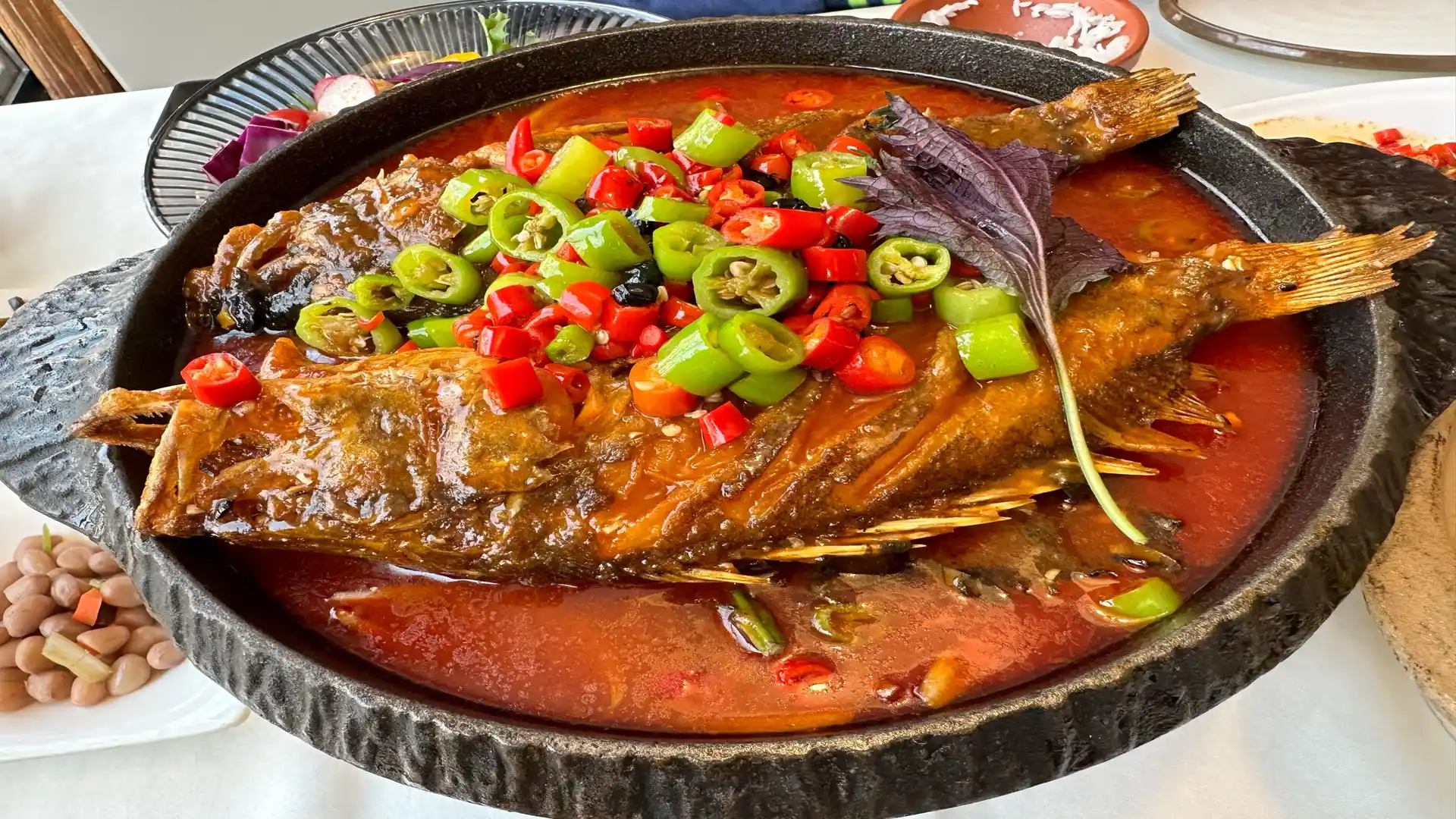The Delicacy of Stinky Mandarin Fish: A Culinary Journey Through Huangshan, Anhui
Introduction:
As a culinary professional, I am thrilled to delve into the world of Anhui’s culinary treasures, specifically the臭鳜鱼 (Stinky Mandarin Fish), a dish that is a testament to the region’s rich gastronomic heritage. This unique dish, originating from the beautiful city of Huangshan, Anhui Province, China, is a perfect example of how food can be a bridge between culture and taste. Let’s explore the origins, cultural significance, and the intricacies of this dish that is both an acquired taste and a beloved staple.
Origins and Cultural Background:
The臭鳜鱼 has a history that dates back centuries, with stories suggesting that it was first created as a means to preserve fish during long journeys. Over time, this preservation method evolved into a culinary art form, becoming a signature dish of Anhui cuisine. The dish is deeply rooted in the local culture, reflecting the ingenuity and resourcefulness of the people who have lived in harmony with their environment for generations.
Ingredients and Preparation:
The臭鳜鱼 is crafted using a traditional method that involves a special fermentation process. The primary ingredient is the mandarin fish, known for its delicate flesh and rich flavor. The fish is first cleaned and then marinated with a secret blend of ingredients, including wine, ginger, and other seasonings, which are crucial for developing the unique aroma and taste. This腌制工艺 (fermentation process) takes anywhere from 6 to 8 days, during which the fish develops its characteristic pungent smell.
Texture and Flavor:
Despite its name, the臭鳜鱼 is known for its delicious taste that is a stark contrast to its strong odor. The fermentation process tenderizes the fish, resulting in a soft and flaky texture that melts in your mouth. The flavors are complex, with a balance of sour, salty, and umami notes that are enhanced by the fermentation. The dish is often described as “闻臭吃香” (smells bad but tastes good), which is a true testament to the transformative power of culinary techniques.
Appearance:
The臭鳜鱼 is a visually striking dish. The fish is typically presented whole, with its scales still intact, giving it a shimmering appearance. The skin takes on a slightly wrinkled texture due to the fermentation, and the flesh appears to be a pale, off-white color. Garnishes such as fresh coriander or thinly sliced ginger add a pop of color and a fresh contrast to the dish.
Representative Dishes and Cuisine:
In Huangshan, the臭鳜鱼 is often served as a standalone dish, allowing the diner to appreciate its unique qualities. However, it can also be incorporated into various other dishes, such as stir-fries with vegetables or used as a base for soups and stews. Its strong flavor profile makes it a versatile ingredient that can elevate a variety of dishes.
Culinary Characteristics:
The臭鳜鱼 is a prime example of the非遗技艺 (intangible cultural heritage) of Anhui Province. It is a dish that requires skill, patience, and a deep understanding of traditional culinary practices. The fermentation process is not only a preservation technique but also a method of flavor enhancement that sets this dish apart from others. The臭鳜鱼 is a testament to the region’s culinary ingenuity and its ability to create a dish that is both challenging and rewarding to the palate.
Conclusion:
As a food professional, I am always in awe of dishes like the臭鳜鱼 that challenge conventional notions of taste and smell. It is a dish that demands respect for its tradition and appreciation for its complexity. The臭鳜鱼 is more than just food; it is a journey through Anhui’s culinary history and a celebration of the region’s unique flavors. Whether you are a food adventurer or a connoisseur of traditional Chinese cuisine, the臭鳜鱼 is a dish that should not be missed.
